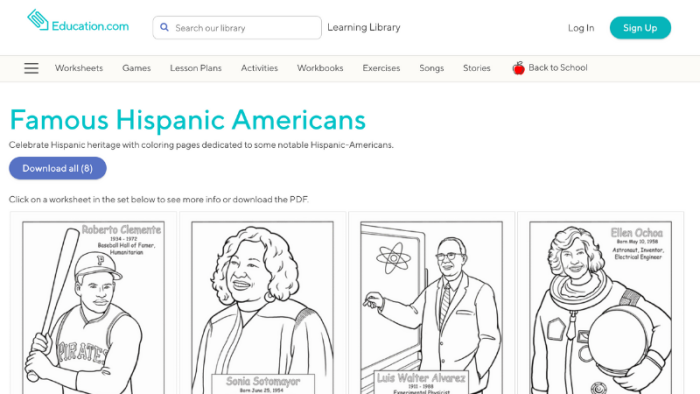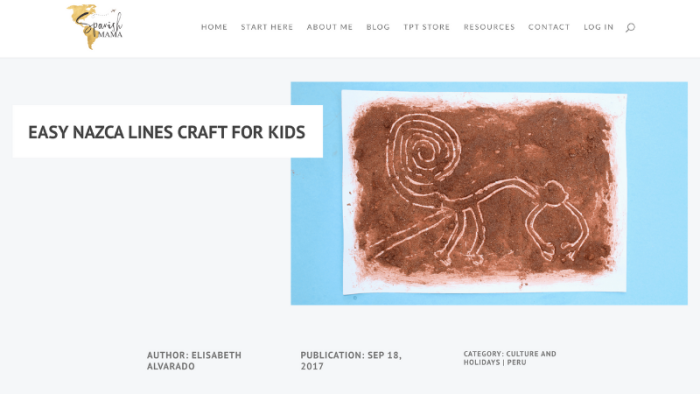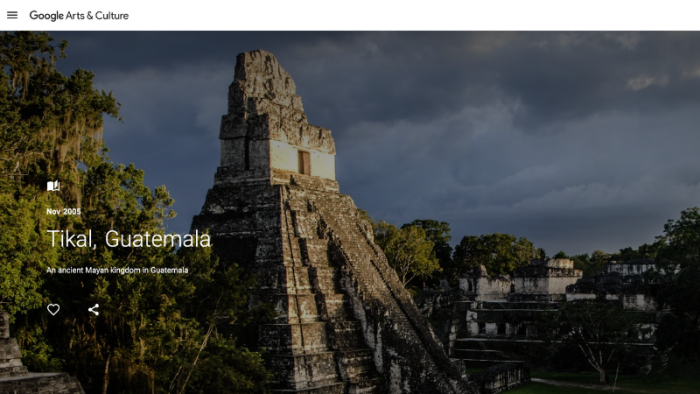Use these videos, articles, and activities to bring the achievements of Hispanic and Latino people into your classroom.

Though backgrounds, cultures, and histories are a part of our classrooms every day, September 15-October 15 is officially National Hispanic American Heritage Month. Teachers can use this opportunity to shine a light on the critical contributions, rich culture, and long history of Hispanic and Latino Americans. With these resources, students can read, listen, watch, and go off-screen for activities that will give them a window into the enormous impact that Hispanic and Latino people have had on our world.
Below, we've broken our list down into grade bands, and by activity type, so you can check out the resources most relevant to your classes first. But be sure to check out all of the resources, since there's plenty of overlap between grade levels!
Resources for Preschool to Second Grade

The offline activities here will get kids making and coloring crafts from Hispanic and Latino cultures. They can also watch videos that highlight traditional music and illustrate how Spanish is a language spoken in many countries. Make sure to give kids space to talk about their own related knowledge and experiences.
Videos:
Editor's note for all of the YouTube videos listed in this article: Pressing play on the YouTube video will set third-party cookies controlled by Google if you are logged in to Chrome. See Google's cookie information for details.
- Use this YouTube video from Sesame Street to talk about different countries where Spanish is spoken. Let your bilingual kids show off some words and phrases in a language other than English.
- This Sesame Street video from PBS LearningMedia showcases some percussion instruments used in South America.
- Show this entire 20-minute YouTube video from 123 Andrés -- or just some clips -- to highlight different types of instruments and music. Students can sing along in Spanish, dance, and listen!
- In this YouTube video from Global Read Aloud week, the Mexican American author Yuyi Morales talks about her idea for her book Just a Minute: A Trickster Tale and Counting Book. Then she reads it aloud.
Hands-on activities:
- If you want an activity that's more open-ended, have kids use the directions from Kid World Citizen to make some Ecuadorian clay -- migajón -- and create something.
- These coloring pages from Education.com can open up a great discussion about each famous person's contributions.
- Explore ancient history by talking about -- and then making -- Taíno petroglyphs using this resource from Kid World Citizen.
- Work together as a class or in groups to make your own piñatas with guidance from HITN.
- Play "Mar y Tierra" (Sea and Land) by placing a line or long piece of tape on the floor. Tell students which side is mar/sea and which side is tierra/land. One student calls out "Mar!" or "Tierra!" and the others jump to that side. Increase the speed until there are only two students left!
Resources for Third to Fifth Grade

Third through fifth graders can watch musicians play traditional instruments, learn about prominent Latino and Hispanic people from the present day and the past, read stories about immigration experiences, and more.
Videos:
- In this YouTube video from Inka Gold, listen to and watch musicians from the group El Dorado play the music of the Andes, including melodies from the Peruvian pan flute. To weave in cross-curricular ideas, talk about why the different pipe lengths on the flute affect the sound, read about the Andes mountains, learn about the Indigenous people of Peru, or have students use figurative language to describe the music!
- This 25-minute YouTube video from the Lincoln Center features the Villalobos brothers and their friends playing music, singing, and dancing. Along the way, they talk about some of the instruments and songs. Afterward, have students write about their favorite segments.
- This YouTube video from the Disney Channel features various Disney stars who kids may recognize explaining and celebrating their Latino and Hispanic backgrounds. The video can be a great jumping-off point for students to share their own backgrounds in some way.
Texts:
- From Education.com, read and talk about Supreme Court Justice Sonia Sotomayor, the first Latina -- and woman of color -- to ever be appointed to the highest court in the United States. Students can then explore more about the judicial branch, research other prominent Latinas, or do some math about percentages of representation in the government in contrast with the U.S. population.
- Explore these poems from Central America, provided in both English and Spanish by Teaching Central America. Read them all together, or have students choose their favorite to illustrate, read aloud, or present in some other way. Of course, students can also write their own poems!
- Teaching Central America also has a host of other downloadable texts and teaching guides to explore -- you'll need to register with an email address for access.
Hands-on activities:
- Patterns within textiles are often a hallmark of a culture, and with this activity from Education.com, kids can explore that idea. First, they color an Incan pattern, and then they can create it themselves.
- The Nazca lines in Peru are sure to fascinate students, so have them learn about what we know, then create their own designs using simple materials and instructions from Spanish Mama! Then they can research more about the ancient people who made them, and make a case for what they think their purpose was.
- Have students learn the history of Guatemalan worry dolls and make their own! This demonstration is from The Cleveland Public Library, but there are other tutorial videos available using other materials, depending on your needs.
Resources for Sixth to Eighth Grade

Explore ancient civilizations and fine art, or learn about leaders like Cesar Chavez. Tackle the appropriation of the taco, or read literature from Latino authors. And you can explore lessons like this one about Maria Moreno at PBS LearningMedia, or these at Zinn Education Project, too.
Videos:
- Paired with reflection questions you can use for discussion or written response, this video from Re-Imagining Migration features Latino people talking about their perceptions of race. After viewing, students can produce their own videos.
- This video from NBC offers a profile of a Latina woman working in STEM. She's an electrical engineer who also mentors young girls. Talk about the importance of diversity in these highly technical fields.
- Watch this video about Cesar Chavez from TeachWithMovies.org to find out why he's a critical figure in the labor movement. Pair with some history or a short story about similar issues, or do some math around how much migrant farmworkers are typically paid.
- This short YouTube video from In This Together profiles one man's experience as a farmworker, and could be a great companion to the video above.
- From this nine-minute video from PBS, we learn about Ynés Mexía, a Mexican-American botanist who made important contributions to science.
Texts:
- Pair this text about Dolores Huerta with the video about Cesar Chavez above to highlight another important icon. Other teacher resources are available with a Facing History & Ourselves account.
- From CommonLit, this set of texts features Hispanic, Latino, and Chicano authors. Consider assigning specific pieces for a jigsaw activity, or letting kids choose a text that appeals to them.
- Starting with tacos and addressing appropriation, this lengthy article from the New York Times is a great way to get kids thinking about how pieces of Hispanic and Latino cultures -- among others -- are often appropriated for profit. Can they think of other examples of this type of appropriation?
- Use one of these unique math-related stories from MathKind to incuse some culture into STEM. Try this one about mysterious ruins in Costa Rica!
Interactives:
- From Google Arts & Culture, this interactive presentation about Tikal, Guatemala, an ancient Mayan kingdom, can give students an appreciation for the vast cities and cultures that existed before our present day. Ask students which discoveries they're most surprised about.
- This feature, also from Google Arts & Culture, provides a treasure trove of information about Mexico. It highlights various places and lets students interact with art. Find out if students are familiar with some of the featured places, and share if you are!
- With this Google Doc from the Kennedy Center, students can research leaders of the Mexican Revolution.
Resources for Ninth to Twelfth Grade

From the ancient Aztec empire to the fabulous Frida Kahlo, high school students can jump into the art, literature, and representation of Hispanic and Latino people.
Videos:
- Watch this short introduction to Frida Kahlo from TED-Ed (via YouTube) and then, to explore further, jump over to Google Arts & Culture to learn more and see her art. Have students determine what pieces of her life they see reflected in her art.
- Though it's hosted on YouTube, this audio-only podcast from the Fall of Civilizations is about the Aztec empire. In its entirety, it would span several class periods, so it's probably best in shorter segments. Listening is a great opportunity for students to practice their note-taking skills.
Texts:
- Read this poem by Juan Felipe Herrera and discuss the imagery he uses. Then you can let students explore more poems curated by Poets.org for Hispanic Heritage Month. Have students choose one or more to present or use as inspiration to write their own.
- Use this article from the LA Times to spark a conversation about Latino representation in the media. Are there any surprising statistics? Students can discuss the importance of representation and potentially identify an example of when they "saw" themselves in the media.
Interactives:
- Click through this Google Arts & Culture collection of Latino musicians with embedded audio of interviews and music. Have students share some of their favorite Latino and Hispanic artists and bands.
- Pair this feature on the Library of Congress website with actual texts, and students can hear Hispanic and Latino authors reading their work to make it come alive.
Image courtesy of Allison Shelley/The Verbatim Agency for American Education: Images of Teachers and Students in Action.







